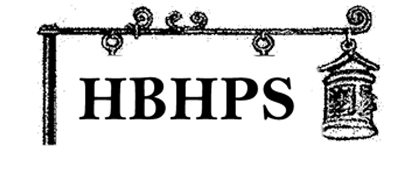Prior to February 9th, 1870 there was even less being done about it. That was the official date that the U.S. National Weather Service began.
While Thomas Jefferson was said to have purchased both a thermometer and a barometer – one of the few in our fledgling country at the time – while he was in Philadelphia for the adoption of the Declaration of Independence, he was not the only Founding Father who was concerned about the weather. Farming was the major concern for early Americans (and everybody else in the world) and farming was synonymous with weatherwatching. Some years later, Lewis and Clark carried thermometers among their belongings on their journey west.
In 1870, President Ulysses Grant signed a joint resolution of Congress, which established the U.S. National Weather Service in typical Washington fashion. The duties of reporting on the weather were given to the Secretary of War, who in turn assigned it to the Army Signal Corps, under the jurisdiction of Brigadier General Albert J. Meyer, who created a weather service under its first name: The Division of Telegrams and Reports for the Benefit of Commerce.
Just creating the letterhead for that must have set the country back a bit.
The Signal Corps proceeded to make the observations and the word ‘forecast’ became a part of our daily lexicon. The organization was charged with the responsibility “to provide for taking meteorological observations at the military stations in the interior of the continent and at other points in the States and Territories…and for giving notice on the northern (Great) Lakes and on the seacoast by magnetic telegraph and marine signals, of the approach and force of storms.”
Telegraphs were what made this job possible. The Signal Corps, aided by volunteers from various parts of the country, would telegraph the data, which was then compiled by the Smithsonian Institution, who created the resulting weather maps. Within a decade, more than 500 stations were reporting. Observations were made and reported three times a day.
Locally, as you knew we would have a piece of this, Life Saving Stations along the coast were pressed into service. They would make observations while performing their normal duties, reporting via telegraph to the Smithsonian.
Not all locations were helpful. For a decade or two, the Army maintained a weather station on top of Pikes Peak, until they finally realized that the weather up there never reliably correlated with or predicted the weather anywhere else. Live and learn.
In 1890, amid accusations of embezzlement and fraud, President Benjamin Harrison moved the weather service into the Dept of Agriculture and relabeled it as The Weather Bureau. In 1942 it was further passed along to the Dept of Commerce and renamed yet again in 1967 as the National Weather Service (If you are confused by these different permutations of the same name, feel free to come sit next to us.)
By the end of the 1800s, the US Weather Bureau had 17 kite stations to help forecast the weather. Yes, kite stations. A string of box kites joined together would lift instruments to 8,000ft. Typically the kites were constructed of spruce with cambric cloth and piano wire for a kite string. Each kite train carried a meteorograph, as well as a combined instrument package which recorded temperature, wind velocity, humidity and barometric pressure.
Not everyone was a fan.
1896
Next came the weather balloon! The Transosondes, as they were sometimes called, carried instruments and were heated with gas. The cooler temperatures at night would cause the gasses to cool and the balloon to deflate, thereby returning it to Earth. Unfortunately the where of the return could not be predicted, causing data retrieval to be difficult and UFO sightings to be numerous.
Today, of course, there are satellites, radars, and various other sensors providing data. The telegraph has been replaced by the internet and computers tabulate the information in the blink of an eye. Tornados can still be a problem, but any other major storm is tracked from the moment it is formed to the moment it evaporates into non-weather. Storm warnings prevail to the level of utter exhaustion and indifference. But even the Hurricane of ‘38, if it were spawned today, would not be able to reach our shores without all due notice. Lives are saved.
However, on the basic questions of “how much snow?” and “how hot or cold?” the answers seem to elude us still. We also seem blessed with an abundance of Storms of the Century and even winter storms have names now.
And so, to sum up, the various versions of the Weather Service, coupled with the latest in technology has, for a century and a half, been able to give warnings and predict the weather with an accuracy nearly equal to today.
Ahem!
